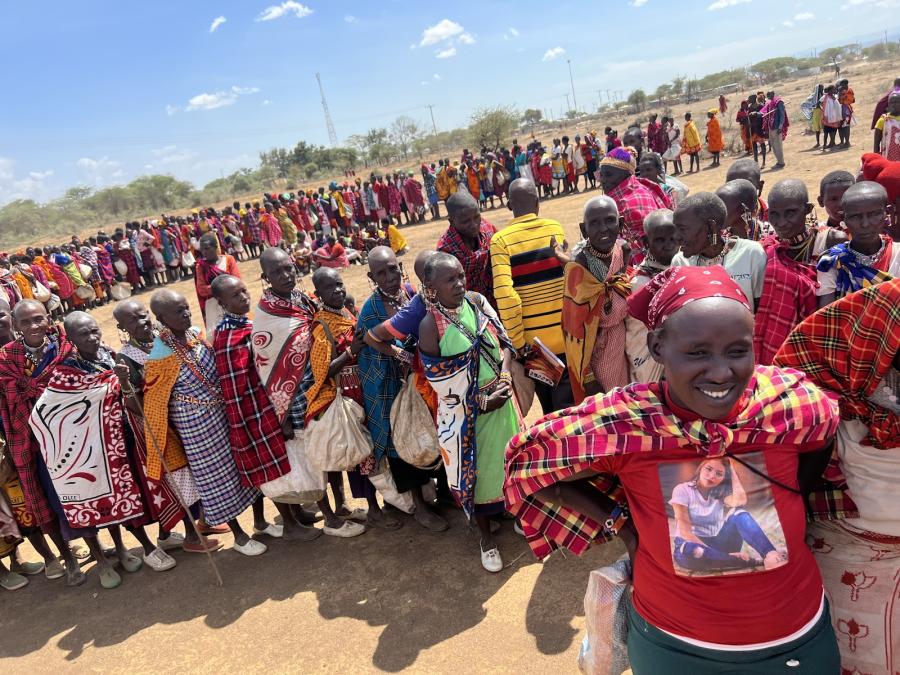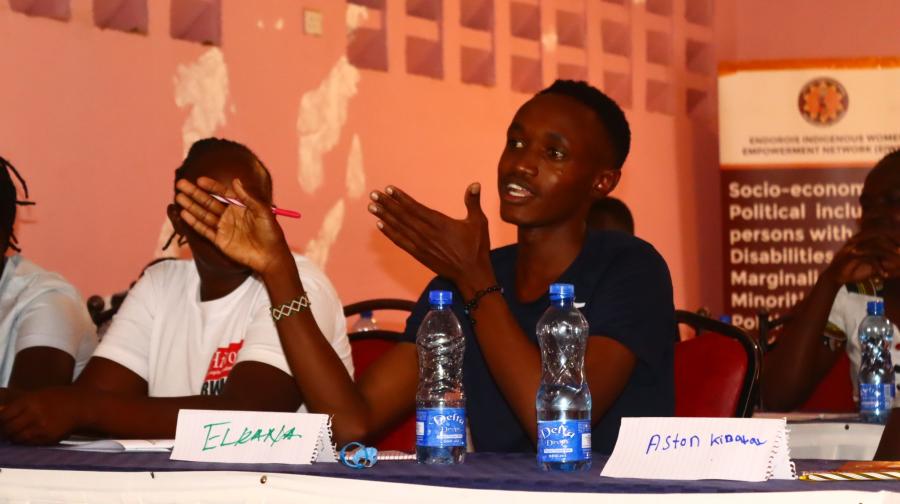
By Ben Ole Koissaba
The president of Kenya Uhuru Kenyatta and the vice-president William Ruto on August 1, 2013 forestalled the escalation of the Maasai/Kikuyu conflict arising from the forceful eviction and burning and destruction of Maasai property at Narasha in Naivasha County in South Rift in Kenya. The visit to Narasha by the president and the vice-president is as a result of the Maasai resolute declaration of not only demanding compensation for loss of life and property but demanded the arrest of all the government officials who took part in the dawn raid on the July 26, 2013 that left 250 houses burnt, over 2000 families rendered homeless, 600 children not attending school and several still missing.
The aftermath of the destruction raised tension between the Maasai and the Kikuyu with most Maasai members of parliament elected through the ruling Jubilee Alliance threatening to defect from the party. The Maasai anger was witness on July 28, 2013 when government officials were forcefully ejected from a prayer meeting by the Maasai who used all manner of weapons to smash government cars as the government officials fled for their dear life from the meeting. The Maasai move and declarations regarding the raids prompted the Maasai to unilaterally declare that:
- No Maasai shall move out of the land
- All people who lost property should be compensated
- All perpetrators of the act should be arrested
The Maasai gave ultimatum to the government that if their demands are not met, then the country should brace for an all-out exodus of Kikuyus from any parts of Maasailand in Kenya. This and the proposed visit by Kenya’s former Prime Minister Raila Odinga to Narasha is believed to be what prompted the president and vice-president to intervene by appointing a committee comprising of 8 elders form the warring communities, 2 members of parliament and the cabinet secretary in charge of internal security who happens to be a Maasai to look into the issue.
Narasha, Laikipia, Kitengela, Mau, Olchurai, Oloirien, Kidong, Namuncha Oloirien (in Masimba) are just but a few of the hot spots of land disputes between the Maasai and other communities in Kenya and is the home of the Maasai who suffered massive land dispossession dating back to the 1900s when the colonial government forced the Maasai off 75 per cent of their ancestral land. Subsequent post-independence government-driven initiatives continued to alienate land from the Maasai.
The truce hopefully will hold but given the historical and magnitude and nature of the problem of land ownership in Kenya, the piece meal and quick fix the president is using may not provide a lasting solution. The Maasai claim ancestral ownership of most of the disputed land but on the other hand Kikuyus from central province hold title deeds for the land despite not even living there. This for President Kenyatta is a nightmare because the resettlement of the Kikuyus was done by his father who was the first president of Kenya. For Uhuru it is a must not happen situation especially if the Maasai make true their threats of ejecting Kikuyus from Maasai land where they have used the tyranny of numbers, government support and economic power to buy land all over Maasai land. The other suspicion is that from the president’s own words, there is “political incitement”. This is an expression that is a pointer to the unease the president has on solving the land questions and wants to blame any acts by the Maasai to protect their ancestral land on the opposition.
The Maasai in Narasha are happy that the president announced during the meeting that they will be compensated but they fear that this is a ploy to arm-twist them in the name of a constitutional provision that allows the government to acquire community land. They are also suspicious that despite the knowledge by the government of the perpetrators of the act of destruction of property, no one has been arrested so far.
The Maasai of Narasha have vowed not to move an inch and that they are ready to be all buried next to their great grandfathers graves. They are not leaving their traditional shrines to be fornicated neither are they going to leave their dry season grazing areas and salt links that support their livestock. A quote from one elder sums it all, “Even the smallest, weakest and perceived stupid animal has a limit, we were moved from Laikipia, Nakuru, Mau, and now at this age and time when our sons and daughters can read and speak the language that the white man and Kenyatta used to dispossess us, the son of Kenyatta need to be told loud and clear, we the Maasai have had enough from the Kikuyu”. The Maasai are contemplating legal action to support the cause.
--Ben Ole Koissaba is a PhD Student at Clemson University SC and founder Chair of Maa Civil Society Forum



